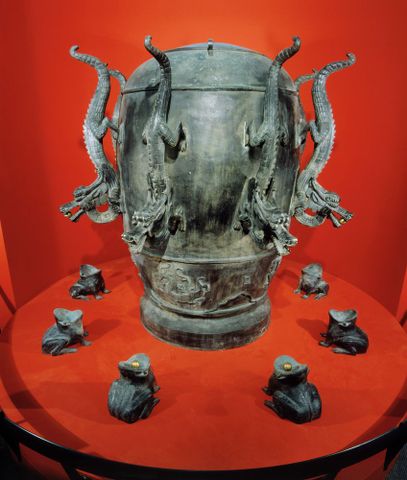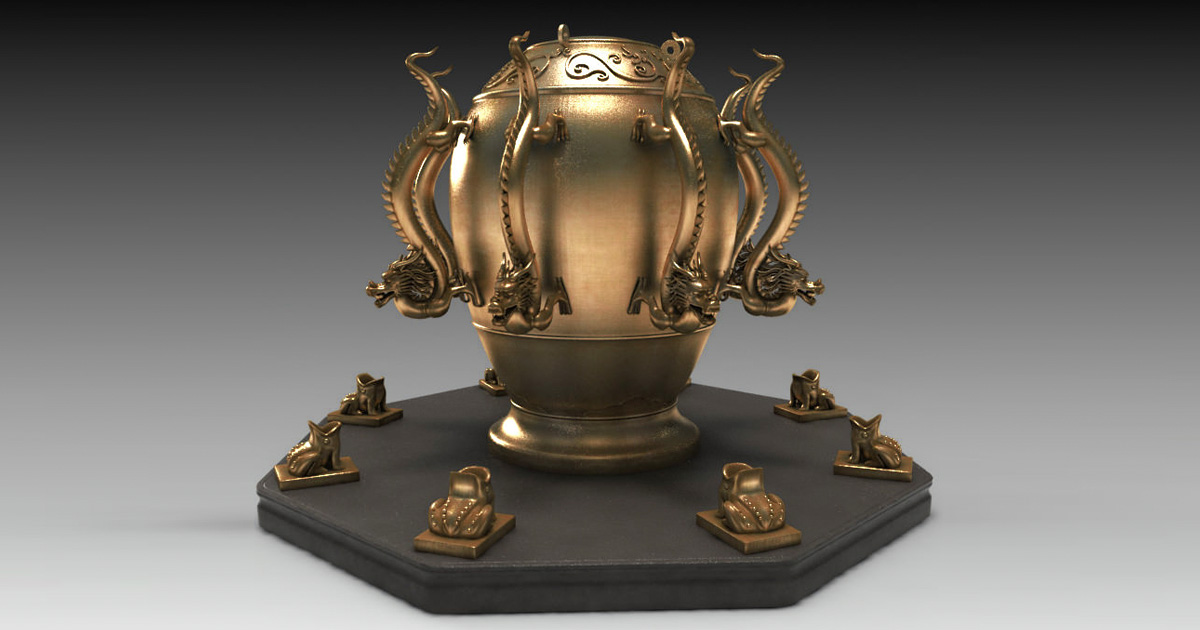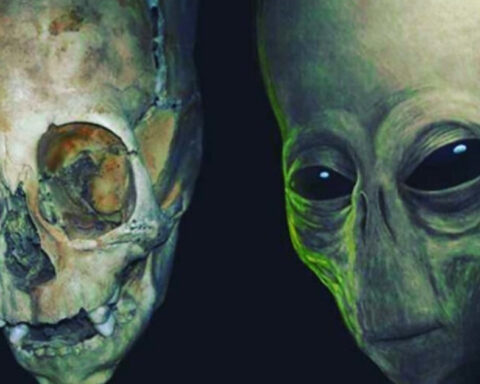The world’s first seismoscope was invented in China in 132 A.D. by Zhang Heng, a Chinese astronomer, mathematician, engineer, and inventor.
The system was identified as looking like a six-foot-diameter wine jar with eight dragons placed face down along the outside of the barrel, marking the primary compass directions.

Each dragon had a small bronze ball in its mouth. Eight bronze toads sat underneath the dragons, their wide mouths gaping open to receive the balls.
When the instrument detects an incoming seismic wave, one of the balls drops and a sound is produced, alerting observers to the earthquake and providing a rough indication of the earthquake’s direction of origin.
It is said to be extremely accurate in historical accounts, but its exact design is unknown. The outside appearance and functionality are known, but the inner workings are still unknown. The replicas were created using the best guesses based on such speculation.
The Chinese have long been concerned about the disruptive power of earthquakes. In 780 BC, an earthquake strong enough to redirect the courses of three rivers was reported in Sima Qian’s Records of the Grand Historian of 91 BC.

Earthquakes were not thought to be caused by the moving of tectonic plates in the Earth’s crust at the time; instead, the ancient Zhou Dynasty explained them as celestial yin and yang disruptions, as well as the heavens’ displeasure with the new ruling dynasty’s actions (or the common people’s grievances ignored).
Zhang Heng introduced the first seismoscope to the Han court in 132, which many scholars consider to be his most remarkable invention.
It was dubbed the “earthquake weathervane” (houfeng didongyi, which translates to “instrument for calculating seasonal winds and the motions of the Earth”), and it was able to approximately calculate the direction of the earthquake (out of eight possible directions).
His bronze urn-shaped unit, with a swinging pendulum inside, was able to detect the direction of an earthquake hundreds of miles/kilometers away, according to the Book of Later Han (compiled by Fan Ye in the 5th century).
This seismoscope supposedly registered the first ever earthquake somewhere in the east. A rider from the east confirmed the earthquake a few days later.
In 2005, scientists in Zengzhou, China, constructed a replica of Zhang’s seismoscope and used technologies available at the time to estimate the content of the inner mechanism.
The replica was used to detect simulated earthquakes using waves from four real-life earthquakes in China and Vietnam. All of them were identified by the seismoscope. In reality, the data gathered from the experiments matched that gathered by modern-day seismoscopes almost perfectly.






